How To Get More Google Traffic (Without Ranking Higher)

Generating Google’s organic traffic is getting harder and harder. Organic competition and SEO budgets are quickly growing while Google is introducing new search elements that distract searchers from organic results.
Getting your site rank high requires more time and effort than 5 short years ago…
But what if I tell you that you can grow your organic search traffic without increasing your rankings?
Sounds impossible?
Well, it is actually quite doable. You can increase your blog’s organic traffic by increasing the click-through rate for your current positions, i.e. by making your search snippets more clickable.
Here’s how:
1. Create irresistible titles
I know this is easier said than done. Everyone says your headlines should be powerful but what exactly does it mean?
More often than not, page titles are what Google uses to create the most prominent part of the search snippet, i.e. its clickable part:
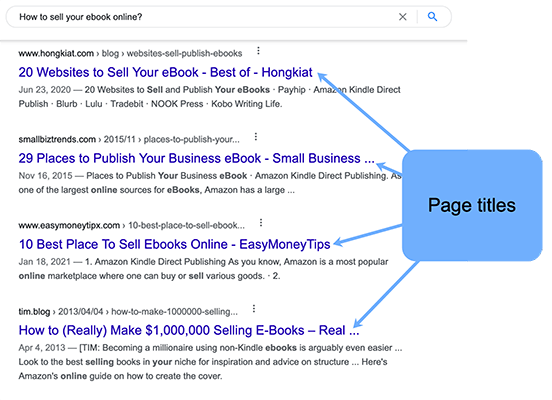
There’s an in-depth article on how to write better titles as well as a list of tools that help you craft headlines that drive clicks. Make sure to check both of these resources. I’ll just sum up a few things that matter most when it comes to Google’s search snippets:
- Put the most powerful part of the title first and Google may truncate it.
- Try and make them shorter. It has long been the best SEO practice to keep your titles within 15 to 40 characters. My good friend Lior Krolewicz of Yael Consulting recommends keeping your titles up to 55 characters long.
- Finally phrase your title as a question. Titles in a question format have been found to attract 14.1% clicks than those that don’t have a question.
For some inspiration on how to come up with a good question, check out Text Optimizer that uses semantic analysis to generate a list of questions around your target search query:
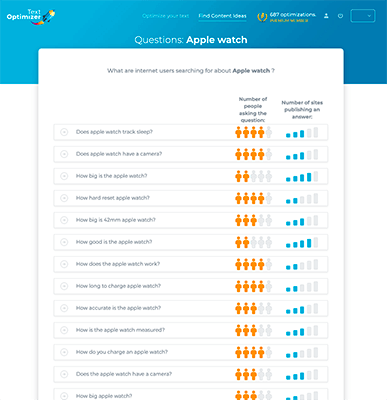
Another good source of question inspiration is Google’s People Also Ask boxes that contain relevant questions to your current search query.
Again, there’s no single recipe here (otherwise everyone would have been using it by now until it loses effectiveness). Play with different ideas and tricks, and see which one delivers better results. There are several WordPress plugins – including this one – that allow you to A/B test your headlines to come up with a more effective one.
2. Create meta descriptions
Meta descriptions are often (not always) used by Google to create the page description that appears underneath the title in the search snippet:
Generally, several studies (including the one referenced above) state that meta descriptions help organic clickability because you can make it as eye-catching as possible. In SEO, the more things you control the better.
In short:
- Make it concise: About 3 sentences are enough
- Include keywords and their synonyms (those will be bolded in search)
- Ask questions in your meta description as well
You can preview what your title and meta description may look like in search using Site Checker:
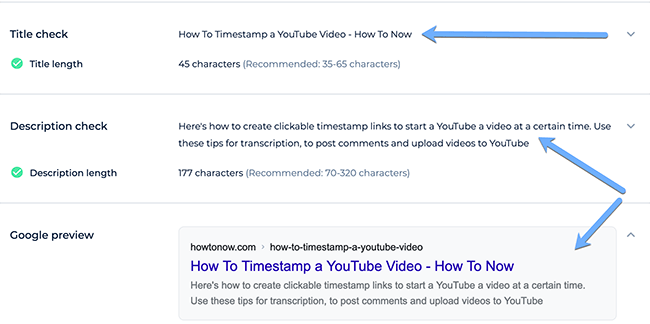
3. Keep your content fresh
This is another challenging task here. For many queries (especially those that deserve freshness) Google would show dates right inside the search snippet:

Undoubtedly, these days impact click-through. As a search user myself, I usually find my eyes drawn to a more recent date.
Google takes that date right from the page. When there are many dates on the page, Google’s choice is often the top-most date but often it is random.
The two big takeaway here is that:
- Keep your dates fresh on each article
- The best idea is to only have one date to prevent Google from guessing
It is, again, easier said than done. How to keep ALL your content fresh? Should we change dates on blog posts?
According to Google’s guidelines, simply changing the date without a “substantial” edit is a poor, manipulative tactic. While there haven’t been any penalties directed towards blogs who do that, there might be a risk there as well. Because I have no idea whether it is safe or not, I won’t suggest doing it here.
What I suggest is keep an eye on your highest-traffic articles and update them once a year. Google’s Search Console is your best friend for identifying those. Login to Google’s Search Console, proceed to “Performance” report and there click through the tab called “Pages”:
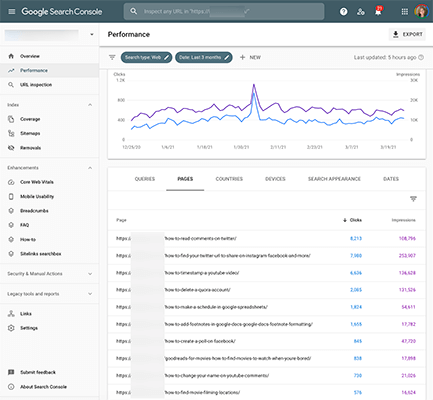
This is the list of pages to keep an eye at. You can export the list to an Excel file.
Your web analytics platform is another way to spot pages that may need updating. For example, here’s my report from Finteza which clearly shows a decline in clicks that should be addressed:
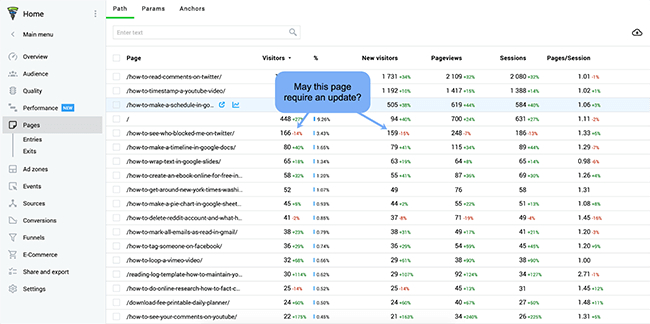
Once you know which articles may need a refresh:
- Check for broken links
- Change the publication date
- Update the screenshots
- Remove outdated information
- Re-upload images for their URLs to have a newer date
We don’t exactly know what “substantial” update is but it never hurts to add a paragraph or two mentioning newer tools or including more recent data.
Additionally, embed a newer video
One of the newer movements of Google is to show a date they pull from a video that is embedded in an article. Here’s what I am talking about:

Now, this may quickly go wrong, especially when you embed an older video or keep an older video after updating an article yourself.
If you notice your click-through going down, check if this date may be causing an issue. At this point, you have three choices:
- Remove the video code
- Re-upload the old video to a new date (note that this will break links to your old video, if any)
- Create a new video which is probably the best option, especially given that it is not that hard these days. You can easily turn your existing text and images into videos and create fresh content.
4. Generate on-page table of contents
Generally, the more clickable links you manage to generate within your search snippet, the more clicks it may potentially attract. Web users are trained to look for links to click.
Every bit counts, and an on-page clickable table of contents may turn really helpful.
Here’s an example of table of contents generating more links within a search snippet:
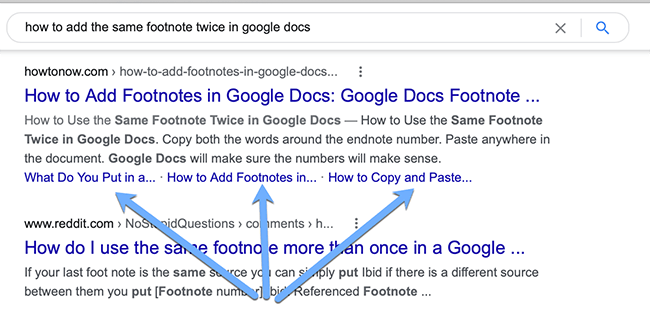
And here’s the page that has that clickable table of contents:
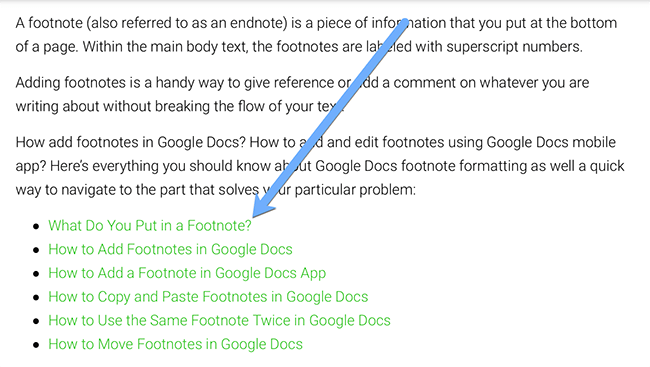
These links are created by using the so-called HTML anchors which are easy to create. While there are WordPress plugins that can generate this table of contents automatically for you, I’ve always had better luck when creating them manually. You can play with both and see for yourself.
5. Use Schema.org
Google supports several Schema markups that help content creators to create “enhanced” search snippets that contain more data than the standard link + description. These “rich” snippets always stand out in search and often provide extra clickable links for searchers to click.
Here are a few Schema types you may want to start utilizing:
5.1. FAQ Schema
One of the newest supported Schema types, this one is still the easiest to get. There are no restrictions as to where you can use it as long as you have more than two questions answered on a page. The rich snippet includes a list of questions pulled from a page. Each question can be expanded to reveal an answer:
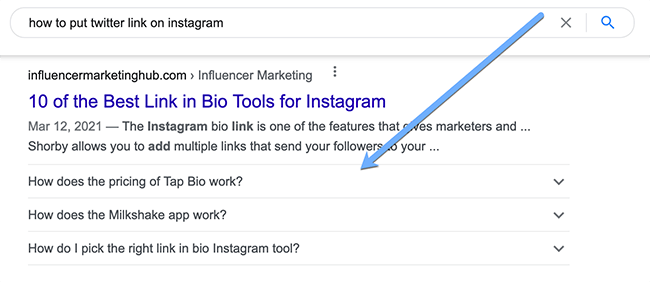
You can implement this schema using the accordion block from Ultimate Blocks or a dedicated FAQ schema plugin such as this plugin.
5.2. Review Rich Snippet
This one looks the prettiest in search but it is also the most questionable one. This rich snippet is enhanced by a star rating and may also include the name of the reviewer. Officially, Google allows to add this markup to the following content types:
- Software App (Tool)
- Book
- Course
- Event
- How-to
- Movie
- Recipe
I refer to this rich snippet as questionable because Google does have a history of penalizing websites that are not following their guidelines (which also sometimes change). To keep a long story short, you have to use the supported markup to nest the review inside. In other words, if you are reviewing a tool, you need to use the Software app schema to clearly designate this page as a review.
This is something not many bloggers do, and there have been a few penalties recorded already. To be clear, those penalties didn’t impact organic positions of the affected pages. They only lost their rich snippet. So it doesn’t look too harsh yet.
Here’s what the review rich snippet looks in search:
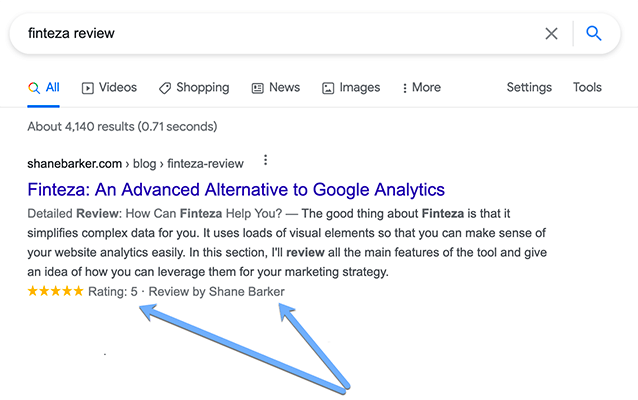
I’ve had good luck generating review schema for my reviews using this plugin but there are several more to try. Learn more in our article on WordPress schema plugins.
5.3. HowTo Schema
This rich snippet generates some additional information on how to complete a given tutorial. It can include a number of steps as well as time and instruments required. It is normally used in DIY niche:

But I’ve also seen it working for just about any tutorial:
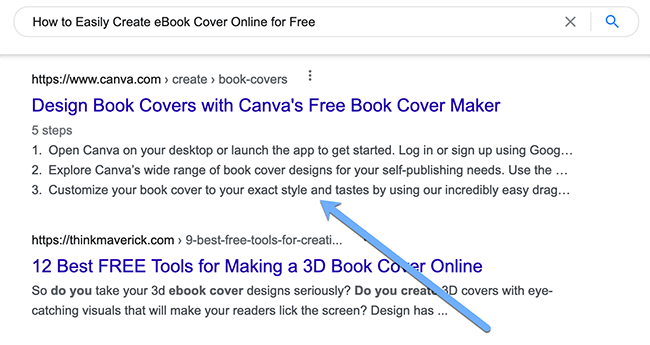
On a mobile device the rich snippet is also interactive allowing you to expand each step to see the details:
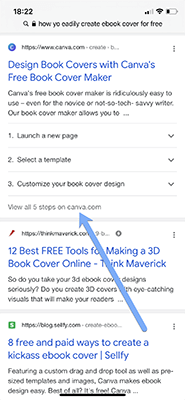
Yoast can help you add this schema to your tutorials.
6. Add tables
Finally, this is probably one of the least discussed tricks out there: Google loves content that is structured as a <table>. Often they would grab part of that table and show it in search results. These search results are called “structured snippets” and they attract attention by having longer and bolder than standard search snippets:
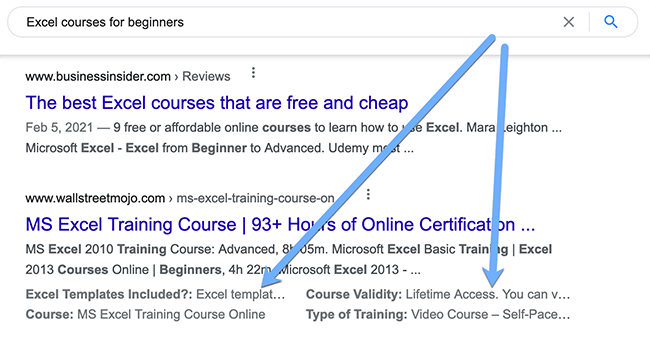
There are many more ways to use tables and charts than you may think. You don’t have to organize lots of data to be able to use a table. You can create a quick summary or overview of listed tools to create a table. Look here’s one example:
In summary: How to make your search results more clickable?
| Method | Why it works |
| Create click-inviting titles | The title is the most prominent element of a search snippet. It is also clickable. |
| Keep your content fresh | Google pulls publication dates to search snippets and searchers are likely to choose a result with a fresher date. |
| Add clickable table of contents | Google often uses HTML anchor to create mini sitelinks for a search snippet. These are extra links searchers can click to get to particular part of your article. |
| Use Schema.org | Google uses structured markup to generate “rich snippets”, i.e. search snippets enhanced with additional data like star ratings, FAQs and steps to complete a tutorial. All of these rich snippets stand out and attract an eye. |
| Use tables | Google pulls information from tables to create “structured snippets.” These snippets look more detailed and include more bold font, so they stand out in SERPs. |
Of course, there’s no way to optimize search snippets for all your old content. So I suggest looking at your #2-#6 rankings first and try to improve those.
Additionally, make it a good habit to re-evaluate your top content on a regular basis: run a quick audit quarterly to see if there’s any page that needs your attention.
Optimizing your current Google’s positions for higher click-through is a low-hanging fruit that is worth every effort. Additionally, many of the above methods (like answering questions, adding summarizing tables, working on your titles, etc.) are likely to help you improve your rankings too, so there’s a win-win!

